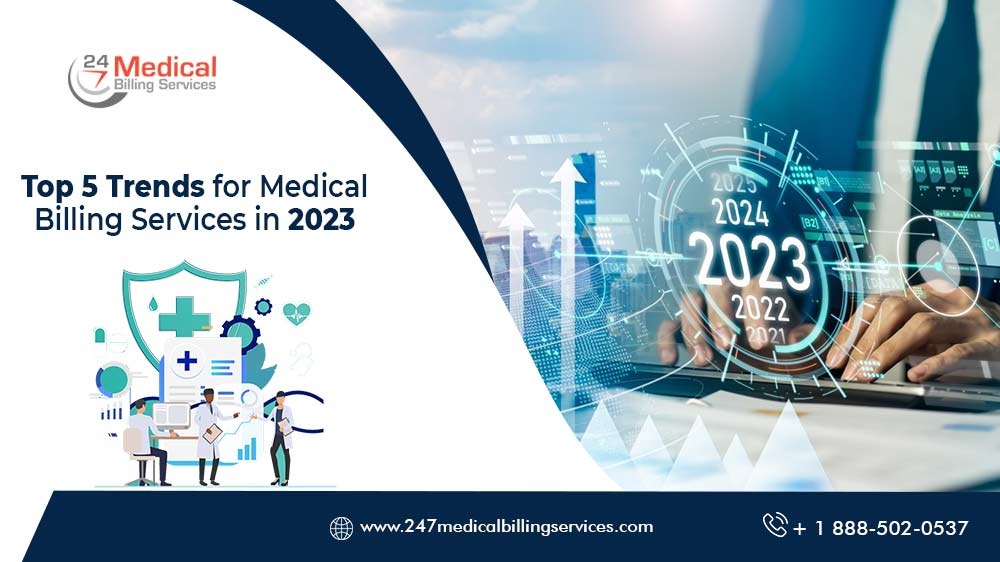
Top 5 Trends for Medical Billing Services in 2023
The healthcare system has undergone an immense transformation in the last couple of years. With the rise of technology and the implementation of virtual care, medical billing has also undergone a significant change. It can be proved by the statistics in medical billing, which point toward advancing several new trends. It includes a substantial rise in the adoption of virtual payment systems and new medical billing technology implementation. As the year 2022 ends, and we move into 2023, it's time to look into some of the top five trends in medical billing services in 2023 that will revamp the healthcare system. Knowing the latest trends will help you understand where your facility lacks and implement them for better revenue for the following year.
1. Autonomous Coding
A report by Kaufman Hall stated that operating margins for hospitals were down by 80% in 2021 compared to the pre-pandemic phase. The number indicates that hospitals and other healthcare facilities need encouragement to adopt and keep going with the automation technology in the billing system. It will not only eliminate the manual errors that were often part of the billing system but also cut down on engaging more billers than needed for the medical billing services in 2023.
The new software that provides an automated coding system ensures the absence of coding errors with a decrease in the medical coding and billing time, warranting on-time submission. The result is preventing any revenue leakage and improving the revenue cycle management while scaling the facility.
2. Improve Patient Experience
One of the critical issues that have been on the rise and have been a significant concern for every healthcare facility is offering a better patient experience and access to healthcare. A key deficit area that has been plaguing the patient experience is the information on payments. The question of how much the patient should pay from their pockets always lingers, and the answer to it has been surprising to find.
In fact, a part of the patient's service requires them to get the information they need immediately and efficiently for the charges they must pay. Such information can help the patients to know the amount the insurance companies will cover and the additional expenses they must bear.
New technology, like AI-backed chatbots and other software, can now provide this much-needed information to patients. The improved omnichannel and the patient's payment system plan will be the new trend with a much-needed overhaul.
3. Cybersecurity Compliance
With the increase in telehealth, telemedicine, work from home by the medical billing staff, and EHR software, cyber security is an issue. The dependency on the unsecured network and often the oversight by the healthcare providers regarding the data can be open to cybercriminals' target.
There have been reports that the healthcare industry has experienced maximum security breaches in the last decade. In fact, the cost of security breaches is on the rise, as it was about $$7.13 million in 2020. According to industry experts, security breaches will continue to rise unless proper cybersecurity is implemented. Cybercrimes in the healthcare sector also violate medical billing and coding compliance, and with new HIPPA privacy and security rules in place, any cyber breach in practice will be jeopardized.
There is a need to put new cybersecurity protocols in place for the sake of revenue cycle management, and medical billing and coding need to be HIPAA compliant to warrant the security of data and records. Therefore, new software and technology are being introduced that are harder to breach. In 2023, medical billing companies will see new and enhanced cybersecurity.
4. AI in Medical Billing
In medical billing, prior authorization must warrant successful reimbursement for the services offered. There is a technology that can provide prior approval, enhanced information exchange, age verification, and other details from the patient required for successful reimbursement. However, earlier, there needed to be more standardized protocols for information exchange and documentation. With HIPPA complaint standardized rules, new technology and software are put in place that not only modernizes the prior-authorization process but also keep AI-backed technology on the rise. The API-driven exchange of information will make the medical billing services in 2023 more robust, secure, and easy to use by the patients, medical admin and billing staff, and stakeholders.
5. Analyzing the Underpayment Issue
Most medical practices are plaques with underpayment issues; mitigating them with in-house staff can be pretty challenging. The new trend that has been there for the last few years and will continue to rise is partnering with a knowledgeable medical billing company like 24/7 Medical Billing Services to mitigate the underpayment issue.
The partners will analyze the problems that cause the underpayment and other issues that decrease the practice's revenue. They will put in place KPIs that will allow you to get the correct view of your facility and a way to correct its course to increase revenue through the medical billing process. Partnering with the 24/7 Medical Billing Services will ensure the medical facility does not have to train medical billing staff, thus decreasing overhead costs and offering experienced services to enhance revenue.
Read more: Impact Of Choosing The Wrong Medical Billing Partner

.png)